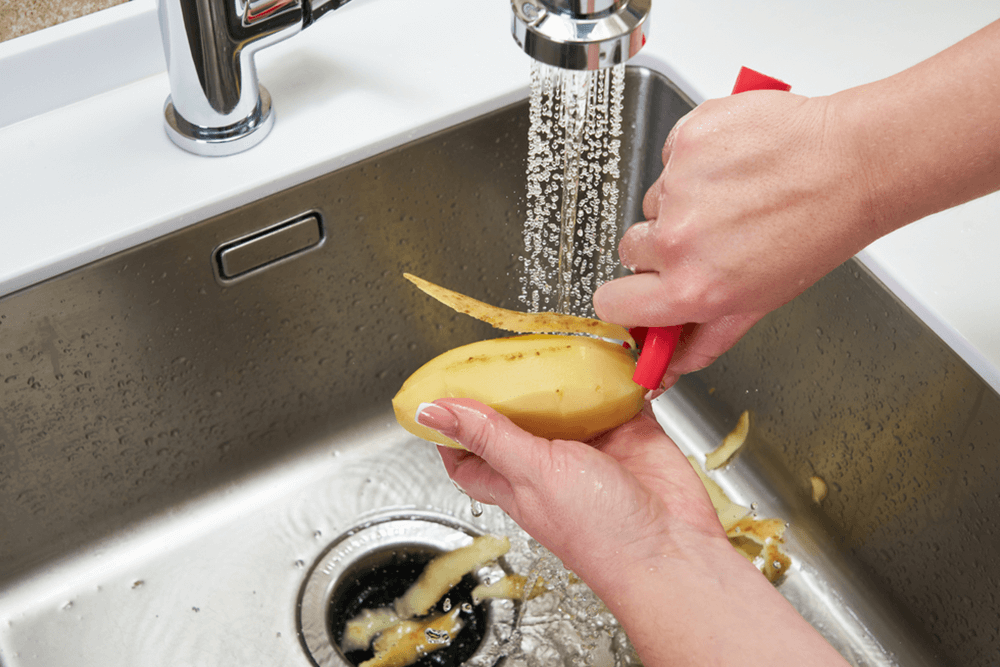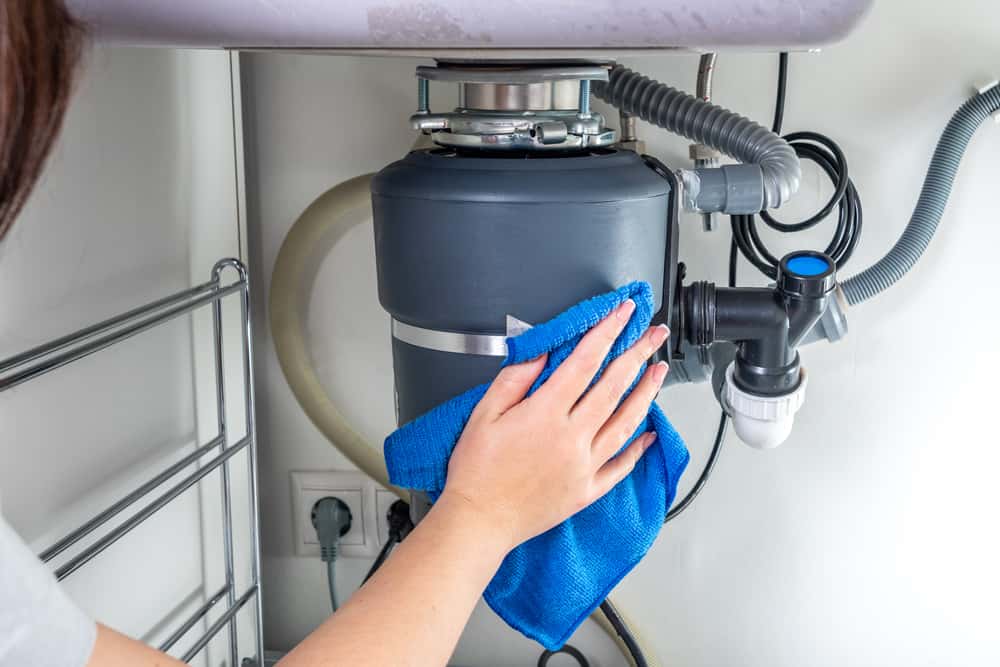Tested Solutions for Fixing a Dripping Garbage Disposal
Tested Solutions for Fixing a Dripping Garbage Disposal
Blog Article
Just how do you actually feel with regards to Garbage Disposal Leaking From Bottom?

Waste disposal unit are important cooking area devices that aid in disposing of food waste successfully. Nevertheless, a leaking waste disposal unit can be an irritating and unpleasant problem to handle. Thankfully, lots of leakages can be taken care of conveniently with a couple of straightforward actions. In this write-up, we will certainly go over exactly how to take care of a leaking garbage disposal efficiently.
Introduction
Waste disposal unit are set up under kitchen area sinks and are developed to shred food waste into smaller sized pieces, allowing it to travel through the plumbing system easily. While these tools are typically trustworthy, leaks can occur over time due to damage, loosened links, or damages to the device.
Usual Sources Of Leaks in Waste Disposals
Worn Seals and Gaskets
Seals and gaskets play an essential role in stopping water from dripping out of the garbage disposal. Over time, these parts can wear away, leading to leaks around the disposal unit.
Loose Links
The links between the garbage disposal and the plumbing system can end up being loose with time, creating water to leak out throughout procedure.
Cracks or Openings in the Disposal System
Physical damages to the garbage disposal, such as cracks or openings in the housing, can likewise result in leakages.
Identifying the Resource of the Leakage
Before trying to repair a dripping garbage disposal, it is important to identify the source of the leakage. This can generally be done via visual evaluation or by performing simple tests.
Visual Assessment
Evaluate the garbage disposal system meticulously for any type of indications of water leak. Pay attention to areas around seals, gaskets, and connection points.
Evaluating for Leaks
One way to evaluate for leaks is by running water with the disposal system and checking for any type of visible signs of leakage.
Tools and Products Needed for Dealing With a Dripping Waste Disposal Unit
Prior to beginning the repair work process, collect the essential devices and materials, including a screwdriver, flexible wrench, plumbing professional's putty, substitute seals or gaskets, and epoxy or patching material for fixing fractures or holes.
Step-by-Step Overview to Taking Care Of a Leaking Waste Disposal Unit
Shut off the Power
Before trying any fixings, make sure that the power to the garbage disposal system is turned off to avoid the risk of electrical shock.
Situate the Leak
Recognize the exact place of the leakage and identify the reason.
Tighten up Links
Utilize a wrench to tighten up any loosened connections between the disposal unit and the pipes system.
Change Seals or Gaskets
If the leak is because of used seals or gaskets, remove the old elements and replace them with new ones.
Patching Splits or Openings
For cracks or openings in the disposal system, use epoxy or an ideal patching product to seal the broken area.
Examining the Waste Disposal Unit After Repair Work
As soon as the repair service is complete, check the garbage disposal by running water via it to guarantee that the leakage has been solved.
Preventive Maintenance Tips to Prevent Future Leakages
To prevent future leakages, it is vital to carry out normal upkeep on your garbage disposal. This includes maintaining it tidy, avoiding putting non-food products or difficult things down the disposal, and occasionally checking for leakages or various other concerns.
Final thought
To conclude, repairing a leaking waste disposal unit is a fairly uncomplicated process that can be finished with fundamental devices and materials. By adhering to the steps detailed in this article and practicing preventative maintenance, you can keep your waste disposal unit in good working problem and prevent expensive repairs in the future.
HERE’S HOW TO FIX YOUR GARBAGE DISPOSAL
WHAT TO DO IF SOMETHING IS STUCK IN YOUR GARBAGE DISPOSAL
If the impeller won’t turn, there’s probably something stuck in the disposal. It could be a steak bone or peach pit, although plumbers report pulling all sorts of inappropriate objects out of disposals, such as bottle caps or aluminum foil. Make sure power to the disposal is off, and look inside to see if you can see the source of the jam.
Never stick your fingers in a disposal. Pull out anything you see with tongs or pliers.
If the disposal still won’t work, it may be time to call a plumber or consider buying a new disposal. GEM Plumbing & Heating is here for all of your garbage disposal needs.
WHAT TO DO IF YOUR GARBAGE DISPOSAL DRAIN IS CLOGGED
Take everything out from underneath your sink and put a bucket or other container under your disposal to catch any water that drains out. Disconnect your disposal from the power supply. If it’s plugged into a wall outlet, unplug it. If it’s hardwired into an electrical box, go to the electrical panel and turn off the breaker for the disposal. Pour ¼ cup of baking soda into the drain, followed by ½ cup of white vinegar. Give the solution a few minutes to fizz and do its work. Look into the disposal with a flashlight to see if you can see an object that might be causing the clog. If you see it, remove it using tongs or pliers. MORE TIPS ON DEALING WITH A CLOGGED GARBAGE DISPOSAL
Never use drain cleaner in a garbage disposal. It can damage the plastic parts inside the disposal. You can also be splashed with the caustic liquid while working to clear the clog. Beware! Never stick your fingers into a garbage disposal. Trust us — not a good idea. In many instances, your dishwasher drains through your garbage disposal. This allows the disposal to grind any large food particles that may be drained out of your dishwasher. There are some jurisdictions, however, where the plumbing code prohibits such a connection. WHAT TO DO WHEN YOUR DISHWASHER DRAINS THROUGH THE DISPOSAL
Run some water in the sink so your plunger has at least a ½-inch of water to create a seal and plunge vigorously up and down several times. You may need to repeat this several times. Run hot water down the drain to clear any residue that remains.

I'm very focused on Why Is and I am assuming you enjoyed the post. Sharing is good. You never know, you may just be helping someone out. Thanks so much for going through it.
Contact Us Today Report this page